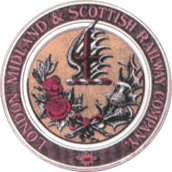LMS JOURNAL
Issues
LMSJ Issue 9
ISBN 1 874105 99 2
Contents
|

|
EDITORIAL
Three years ago we launched the Preview issue of LMS Journal and, in keeping with Wild Swan policy, it was No. O. This means that although this edition is No.9, it is the tenth LMS Journal to be published and a convenient point at which to look back at what we have achieved, and forward to outline some of our objectives.
In previous Editorials I have stressed the need to maintain a balance between subjects and geographical areas of the LMS Company. Although it has not been too difficult to maintain a subject balance, the division of material between the Western, Midland, Central and Northern Divisions has been less easy. Furthermore, we also have to consider joint lines and standard practice. However, I did say that any judgment or assessment should only be made across a number of editions.
On several occasions the publisher and I have debated the question of subjects to be covered and generally our thoughts run along similar lines, with an emphasis upon answering the question 'what was the LMS?' in its broadest sense. My preference is to use prime source material to show what happened and the following are two examples of this approach to be found in this issue.
In LMS Journal Nos. 7 and 8, Stanley Jenkins and Elaine Amos outlined the story of the Midland line from Mangotsfield to Bath, which provided the link between the old Midland Railway and the Somerset £ Dorset Joint line, and in this issue Neil Burgess explains how the bridges were strengthened to allow more powerful engines to work over the line during the LMS era. I mention this simply to show that one of the factors that prevented the use of more powerful locomotives over many sections of line was not the perverse attitude of the CME or a Derby domination of the company, as some authors have suggested, but physical constraints set by the bridges. This is a theme that we will return to again. It was a major factor behind the company's locomotive policy.
The second example stems from a recent debate about how many stations the LMS opened. Needless to say, no-one knew the answer. As a result, John Edgington set out to establish the facts and, for good measure, we have included some details about station closures. From this it should be clear that services were withdrawn and stations closed long before the Beeching era! We will return to the story of station closures in a later edition.
We have some interesting projects underway for the future, including other titles that will be published within the LMS Journal orbit, but of this more anon. By the time these words are read, the Warley National Model Railway Exhibition, where we have a stand, will be behind us and I am sure that I will have spoken to numerous readers during the course of this show. Therefore, it only remains for me to say that the next edition should be published in the Spring of 2005 and to thank all our readers for their encouragement and support.
Editorial confession
My apologies to the L£NWR Society. In LMS Journal No.8, for some unaccountable reason, the number of the Claughton shown on page 26, was given as 4981 instead of 5981.
Bob Essery
Site contents Copyright © Cygnet Magazines Limited, 2014-2025.




